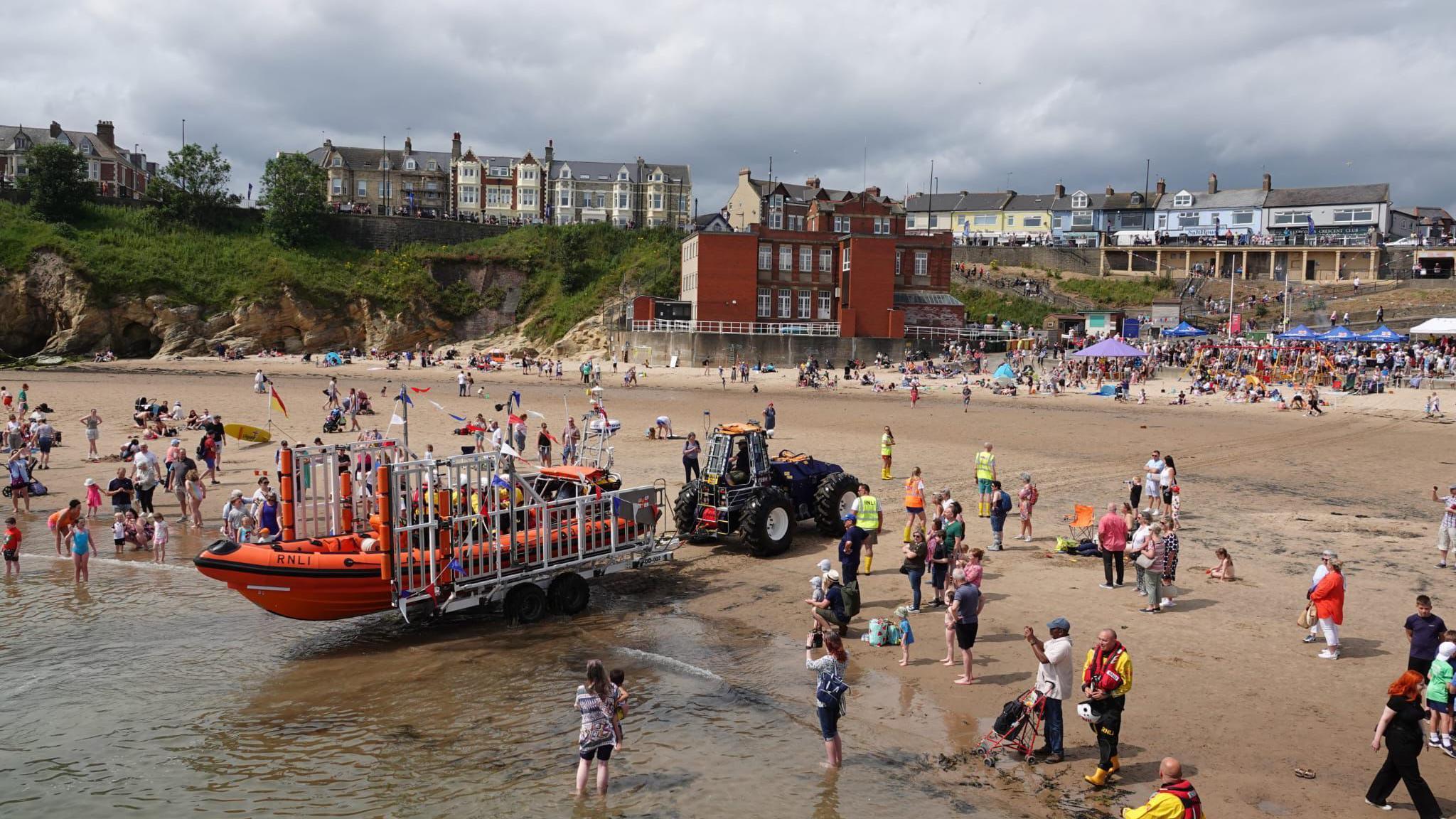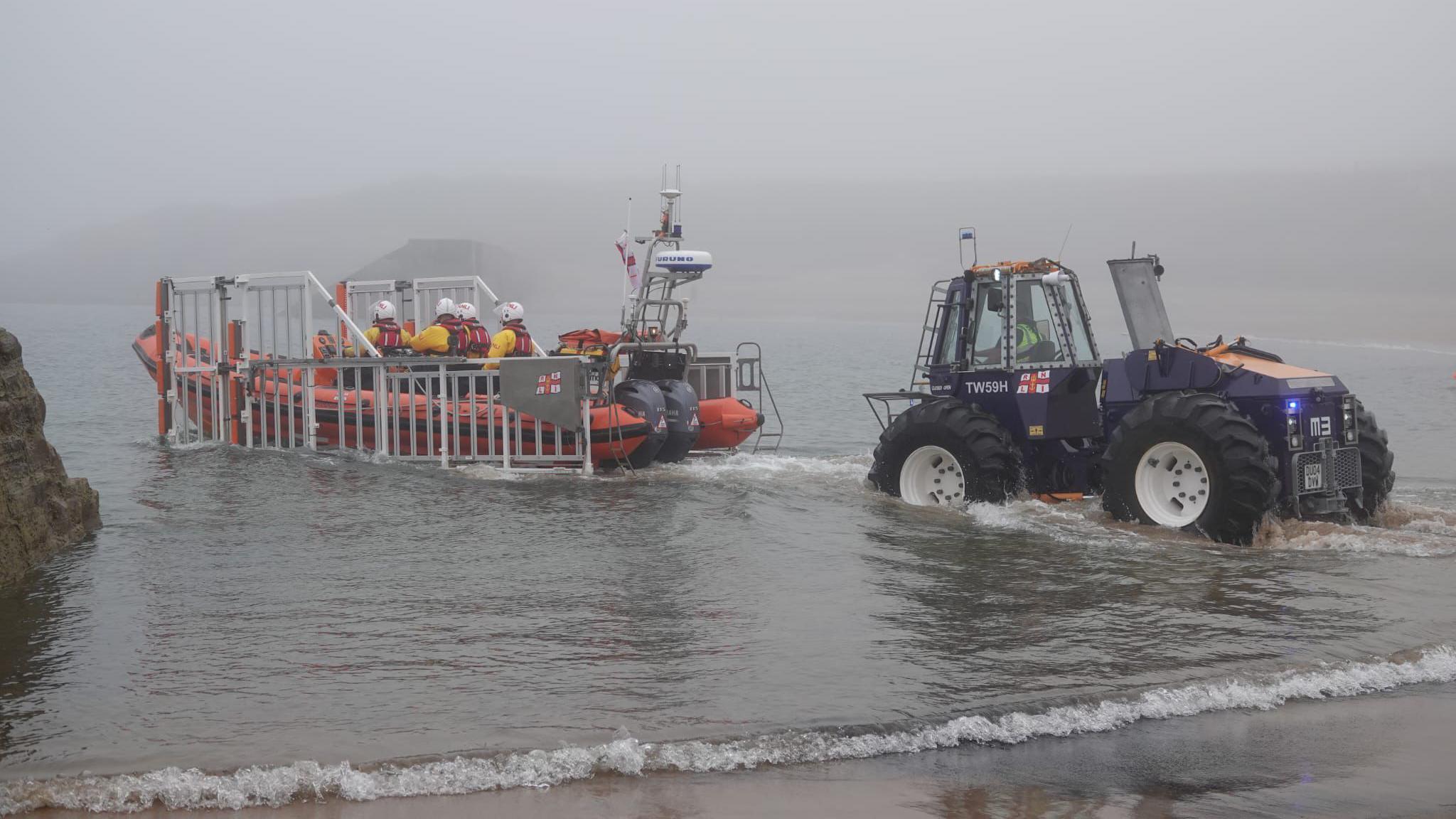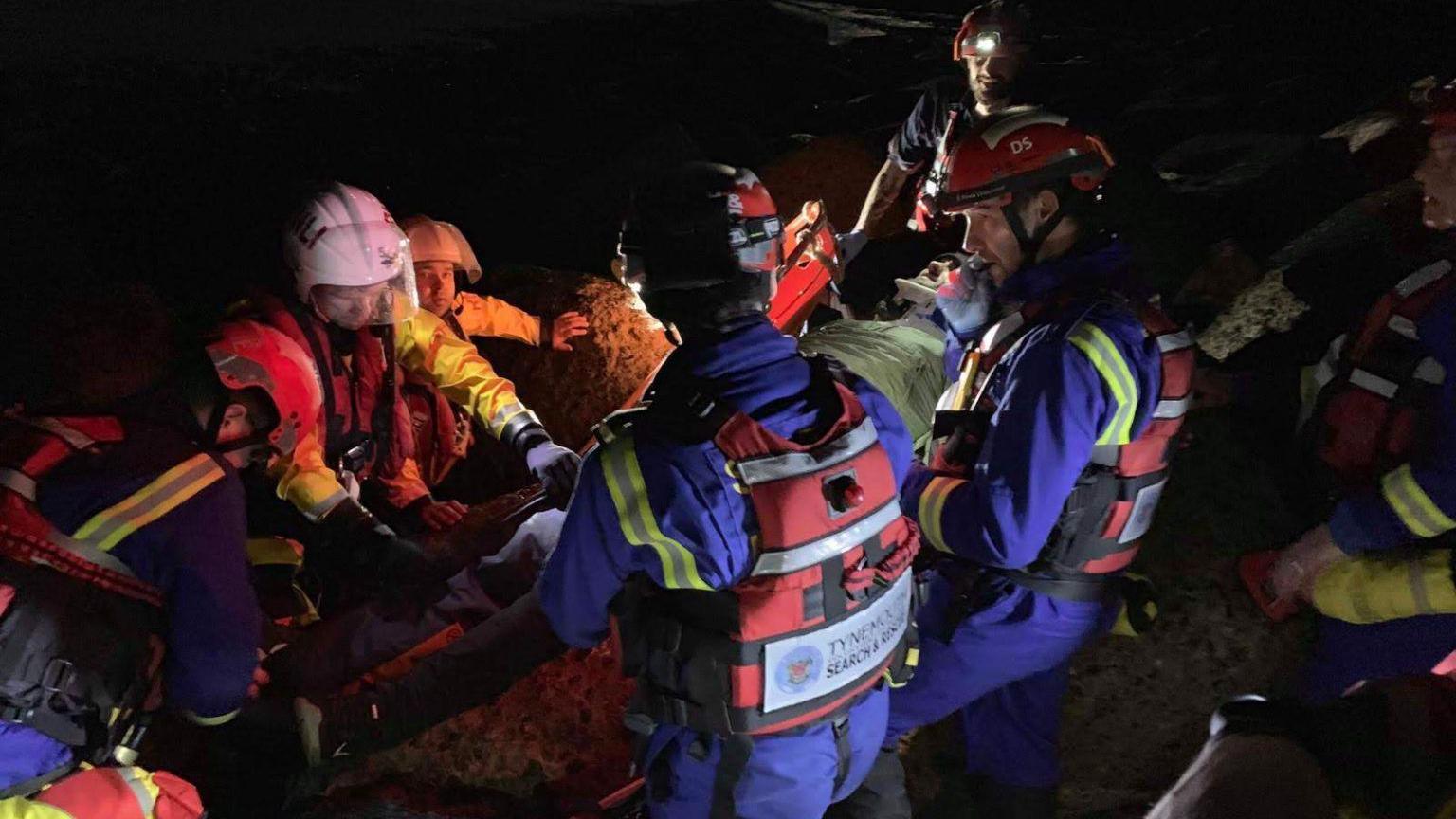Lifeboat team on track for busiest year

Sunny weather has attracted large numbers of people to the area's beaches
- Published
A lifeboat team says it is on track for its busiest year in living memory as months of good weather have encouraged large numbers of people to visit the area's beaches.
RNLI Cullercoats, in North Tyneside, has responded to 41 call-outs since January, compared with 45 for the whole of 2024.
Boat crew volunteer Sarah Whitelaw said the year "started off busy and has continued that way".
Call-outs often involve swimmers, paddleboarders and kayakers getting caught out by rip currents and off-shore winds, while the recovery of broken-down vessels is another cause.
"There've been years when we haven't had our first shout until March or April, but this year we had several in January," Ms Whitelaw said.
"One big factor is the weather has been good, so there were a lot of people on the beach before the lifeguard season started in May.
"We're not even in the summer holiday period yet and that tends to be when we have the most beach users."

Volunteers are ready to respond every day of the year, whatever the weather conditions
The team, which has about 30 volunteer members of boat and shore crew, covers an an area roughly stretching to Seaton Sluice on one side and Tynemouth Longsands on the other.
Despite efforts to publicise water safety messages, Ms Whitelaw says rip currents and off-shore winds can catch people by surprise.
"It can be calm within the bay and then all of a sudden they get beyond the piers and the wind catches them where they're no longer sheltered by the cliffs," she said.
"They're suddenly blown off-shore."
Tips to stay safe
Rip currents can reach speeds of 5mph and pull anyone caught in them out to sea
They can be difficult to spot but are "sometimes identified by a channel of churning, choppy water on the sea's surface", the RNLI says
If caught, do not try to swim against the current, but rather try and head parallel to the shore until free from its grip
Follow the RNLI's five-step "Float to Live" protocols, external
Additional advice includes carrying a phone in a waterproof pouch and using the SafeTtrx app, which would quickly enable the RNLI to locate those in trouble
Follow BBC North East on X, external, Facebook, external, Nextdoor and Instagram, external.
Get in touch
Do you have a story suggestion for BBC Tyne?
Related topics
- Published12 April

- Published22 April
